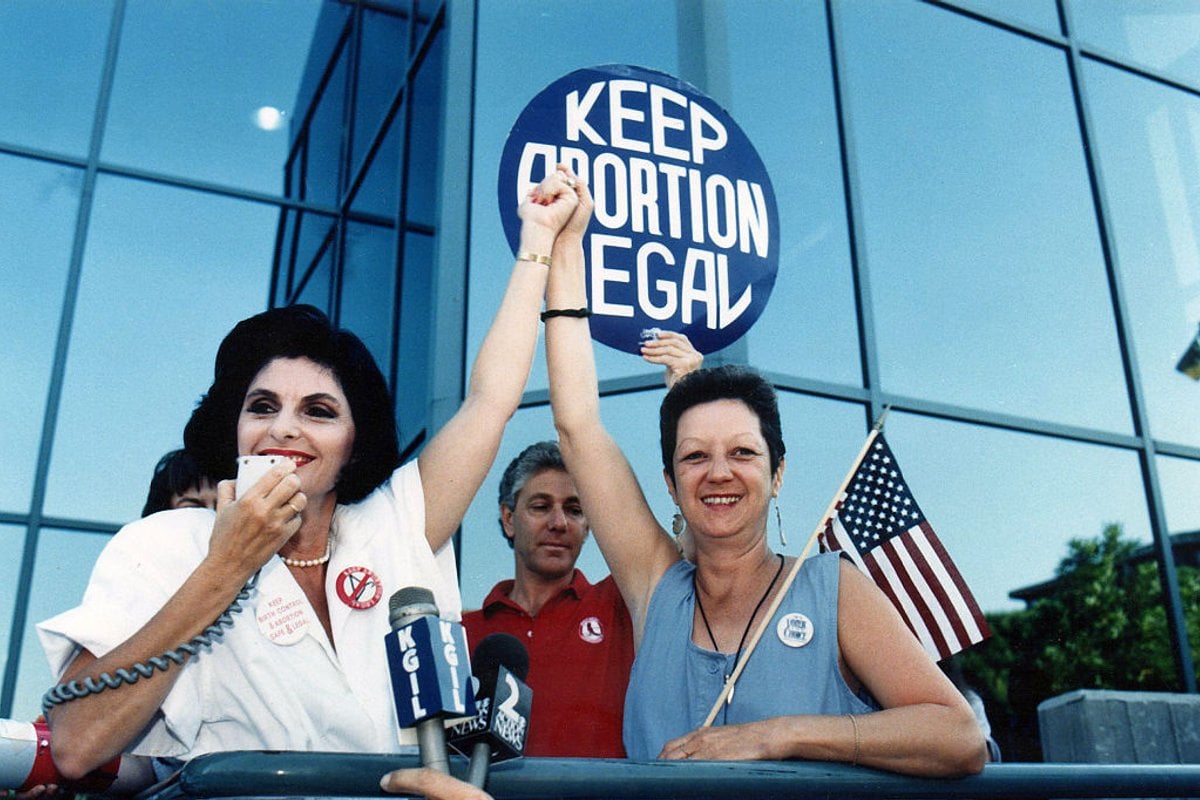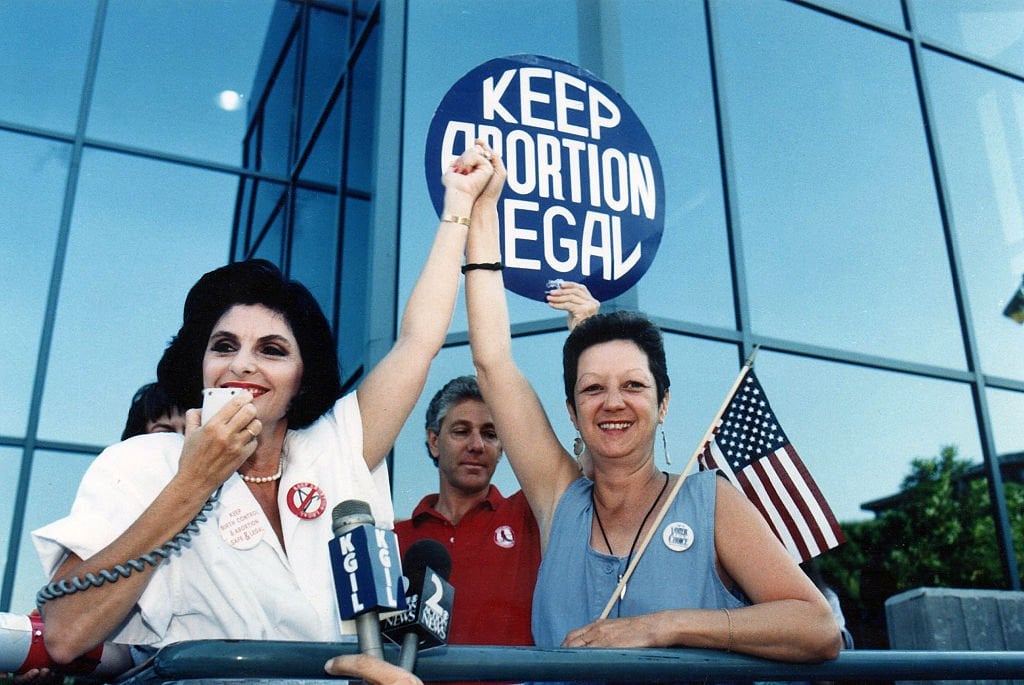
Roe v Wade is famous worldwide as the Supreme Court decision that protects American women’s right to abortion.
But Norma McCorvey, the “Jane Roe” of the case, never got the abortion she wanted. Instead, she had the baby and gave her up for adoption.
Now, five decades later, the “Roe baby”, Shelley Lynn Thornton, has gone public for the first time.
Watch: Explaining Abortion To Uncle Barnaby. Post continues below.
In Joshua Prager’s new book The Family Roe: An American Story, Shelley reveals how she felt when she found out who her birth mother was and what happened when they finally spoke.
Norma had a tough upbringing.
Her father Olin was mostly absent and her mother Mary admitted to Vanity Fair that she “beat the f**k” out of her.
Norma spent years in reform school and, even though she identified as a lesbian, got married to a man at 16.
That marriage was abusive and didn’t last long, but resulted in the birth of her first child, Melissa, who was adopted by Mary. Norma later claimed her mother tricked her into signing the adoption papers.

